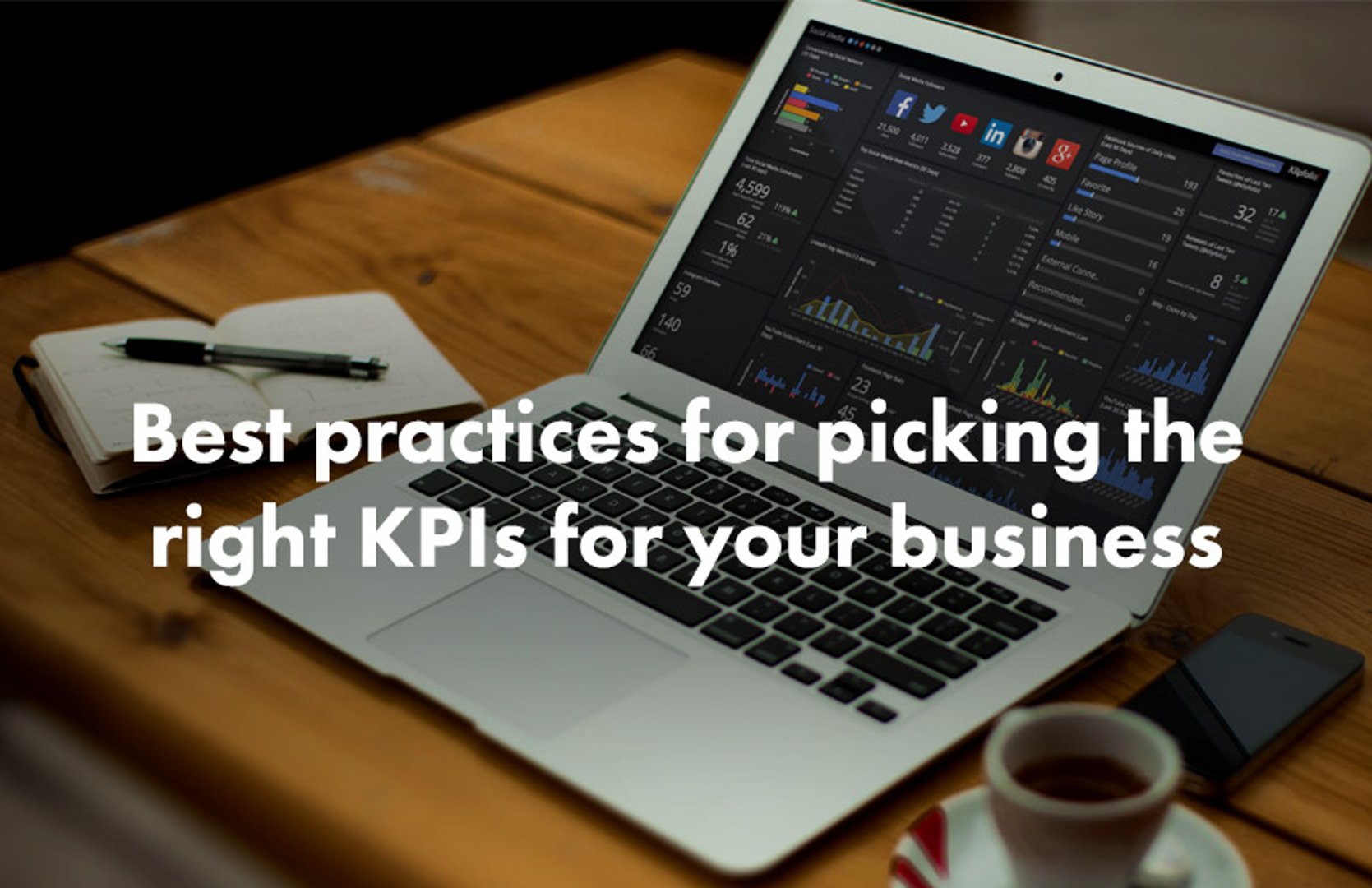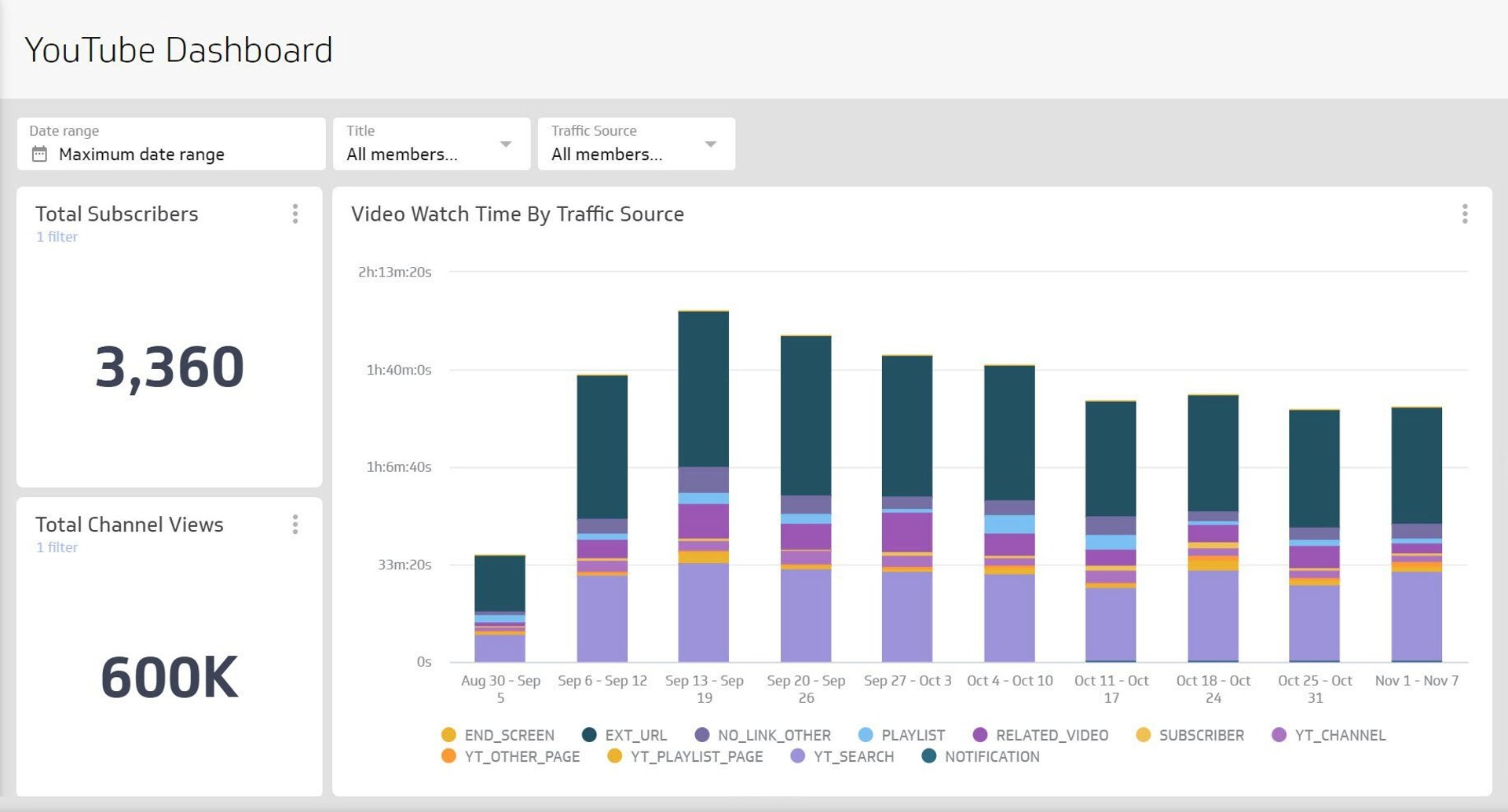Top 10 Marketing Dashboard Ideas for Tech Companies

Published 2025-11-14
Summary - Your marketing data lives in too many tools and reporting is taking over your Fridays. The design ideas you’ll read about here will help you cut the noise, align with sales, and turn your dashboards into a daily decision system.
How we chose our top 10
There are a lot of great dashboard design ideas out there. So many that it was hard to make a list of only 10!
We based our choices based on:
- Provides at-a-glance information
- Fast time to value
- Manageable effort level for a small marketing team
- Fit for mid-sized SaaS motions and longer cycles
1. Publish a marketing metrics catalog everyone understands
What you’ll do
Keep everyone on the same page by sharing metric and KPI definitions on your dashboards. For maximum impact, we suggest adding descriptions for Customer Acquisition Costs (CAC), Marketing Qualified Leads (MQL), Sales Qualified Leads (SQL), Sales Accepted Leads (SAL), and Return on Advertising Spend (ROAS) metrics, and common pipeline contribution and attribution terms.
Why it works
Shared definitions put an end to reporting debates and keep your Sales and Marketing teams aligned. No more disagreements on where values come from and how they’re calculated!
How to build it in Klips
- Add a Text component and lay it out as a banner across the top of the dashboard.
- Enter definitions, formulas, and data source names for each metric.
- Add “Last updated” information using a Date/Time component.
Starter entries
- CAC = Total marketing spend ÷ New customers
- ROAS = Revenue attributed to ads ÷ Ad spend
- MQL, SQL, SAL = Use your CRM stage rules and document thresholds
2. Gather together your core data sources
What you’ll do
Pull data into Klipfolio Klips from Google Ads, LinkedIn Ads, Facebook Ads, GA4, HubSpot, or Salesforce. Start with the must-haves, then add depth.
Why it works
Get a quick view of the important stuff–spend, engagement, pipeline, and revenue–all in one place.
How to build it in Klips
- Use built-in connectors to connect to and authenticate with each service.
- Add Klips for each service to build a centralized “Data Sources” dashboard that includes source status, owner, and refresh frequency.
Pro tip
Use meaningful names for campaigns and ad-groups so filters and joins are easy to work with and understand.
If data needs shaping, you can route it through a light ETL tool or spreadsheet before bringing it into Klips. You can also perform light modelling in the Klip Editor or data source modeller in Klips.
3. Design dashboards for every team
What you’ll do
Split reporting into three main dashboards: Executive Summary, Demand Gen Ops, and a Sales + Marketing shared pipeline view.
Why it works
The needs of each team are unique. Tailoring dashboards to display the information and level of detail needed, helps teams quickly get to data and make good decisions.
How to build it in Klips
- Executive Summary: Include five to eight KPIs with coloured indicators and weekly trend lines.
- Demand Gen Ops: Add Klips for channel, campaign drilldown, and cost and conversion data.
- Sales + Marketing: Include lead handoff metrics, opportunity stages, win rate, and cycle time.
Starter KPIs
- Exec: New pipeline, net new Annual Recurring Revenue (ARR), Cost per Opportunity, and ROAS
- Ops: Click-Through Rate (CTR), Cost Per Click (CPC), Conversion Rate (CVR), Cost Per Lead (CPL), and SQL rate
- Shared: MQL to SQL rate, SQL to opportunity rate, and win rate
Pro tip
Try applying the five-second rule–users should be able to see important trends on the dashboard within the first five seconds.
Use variables to toggle the display for date range, channel, and region.
4. Map spend to revenue
What you’ll do
Build a blended dashboard that shows first touch, last touch, and a multi-touch weighting.
Why it works
Leaders can see how programs create demand early, push deals forward, and close.
How to build it in Klips
- Join Ad data to CRM Opportunities by Campaign and UTM data.
- Create three Klips: First Touch, Last Touch, and Multi-Touch.
- Add a summary Klip that compares Cost per Opportunity and Cost per Closed-Won across models.
- Include a “notes” text panel that explains the math behind each Klip.
Starter outputs
- Spend to Pipeline by model
- ROAS by model
- Top campaigns influencing Closed-Won
5. Replace monthly, static slide decks with live reporting
What you’ll do
Energize leadership reporting with live dashboards that refresh daily or hourly. Keep everyone informed with direct links, scheduled emails, and large-screen displays.
Why it works
Save time - no more waiting for slides to be updated and distributed! Make better decisions and stay ahead of the game with up-to-date, near-real-time data.
How to build it in Klips
- Set refresh schedules for each data source.
- Set up email sharing to send dashboard PDFs on a schedule.
- Use dashboard TV mode for always-on visibility in the office.
Pro tip
Lock layout and colours to keep screenshots consistent across updates.
6. Track leading indicators daily
What you’ll do
Add a Daily Pulse dashboard for CTR, CPC, CVR, landing page conversion rate, and MQL rate. Pair it with Pipeline and Revenue to see progress.
Why it works
Catching a CPC spike or a conversion dip today helps protect next month’s pipeline.
How to build it in Klips
- Use compact Klips, like sparklines, with 7-day vs 28-day comparisons.
- Apply coloured indicators to highlight off-track metrics.
- Add a “Top shifts” Klip that lists the biggest day-over-day changes.
Starter thresholds
- CTR down 20 percent week over week
- CVR down 15 percent week over week
- CPL above target for three days
7. Proactively react to change
What you’ll do
Build dashboards with Klips that provide at-a-glance comparisons between past and present. Configure Klips to instantly reveal changes in your data.
Why it works
Comparing data between time periods helps you see what’s going right and what’s going wrong. Catching issues early helps you solve potential problems when they arise, instead of waiting until the end-of-week reporting meeting.
How to build it in Klips
- Create Klips that compare actual performance to a rolling average.
- Add indicators to Klips that react to changes in data based on conditional thresholds. When these thresholds are met, you’ll be visually alerted, for example, with text, icon, and value colour changes.
- Add a user input control with a “sample_target” variable to a Klip. When you enter a value into the target field, the chart reacts responsively, letting you quickly see whether you’re on track to meet your goal.
Good guardrails
- Spend spike above 30 percent day over day
- Lead volume drop above 20 percent week over week
Pro tip
Keep an eye on your data source library, where refresh and authentication errors are quickly surfaced and resolved.
8. Build a pipeline dashboard for the Sales Team
What you’ll do
Create a dashboard that displays funnel data, from Inquiry to Closed-Won. Include Service Level Agreement (SLA) Timers, Stage Conversion Rates, and Opportunity Aging.
Why it works
Sales see the same numbers as Marketing so they can work more efficiently to solve bottlenecks.
How to build it in Klips
- Pull CRM stages and owners.
- Add Klips for MQL to SQL Rate, SQL to Opportunity Rate, and Average Days in Stage.
- Include an SLA Klip for time to first touch.
- Apply filters for segment, region, and channel.
Conversation starters
- Which stage slowed down deals this quarter?
- Where are handoffs failing?
- Which marketing channels create the fastest wins?
9. Bake in data quality checks
What you’ll do
Build trust in your dashboards with a verification panel. Display ad spend totals, last refresh time, and data owners.
Why it works
Trust is fragile. Don’t let questionable numbers send people back to spreadsheets.
How to build it in Klips
- Create a “QA strip” to display across the top of each dashboard. Include a list of the data sources powering the dashboard’s Klips, so you can quickly confirm refresh status via the data source library. It’s also a good idea to add contact details for each data source owner so you know who to talk to if issues arise.
- Add a Klip that compares platform totals to dashboard totals.
Checklist
- Successful refresh in the last 24 hours
- Dashboard spend equals platform spend
10. Simple design for maximum impact
What you’ll do
Keep things clean and simple with consistent colours, short labels, clear hierarchies, and just enough detail. Don’t overload the dashboard–only add as many Klips as it takes to deliver an instant message and enable fast comparisons.
Why it works
It’s easier for people to understand simple, visual patterns, not walls of numbers.
How to build it in Klips
- Limit each dashboard to one main question and one secondary question.
- Use the same colour for the same marketing channel across all Klips.
- Choose line charts for trends, bar charts for ranking, and tables for precise values.
- Add hover states and drilldowns instead of cramming details into the top-level view.
Design rules
- Include five to eight KPIs per dashboard
- Use one font style
- Show a clear value, delta, and trend on every KPI
Next step
Try connecting Klips to your top three data sources and adding a few pre-built Klips. Start with an Executive Summary dashboard, then add the Daily Pulse and the Shared Pipeline dashboards.
Related Articles

17 KPIs Every Data-Driven Manager Needs to Lead Their Team
By Danielle Poleski — October 14th, 2025
Best Practices for Picking the Right KPIs for Your Business
By Jonathan Taylor — March 29th, 2024
The top 12 metrics for social media managers
By Emily Hayward — December 11th, 2023
